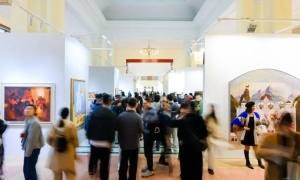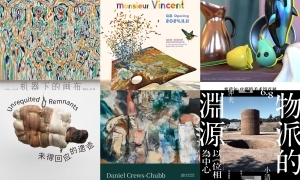上周,我们推出了一篇《在艺术市场赔钱的九个方法》(见7月21号新闻),希望能给大家一些建议。当然,在艺术市场也是可以赚钱的。首先,对艺术真正的热爱是十分重要的,它可以帮助你培养良好的判断力,并且经得起时间的考验——保留15至20年是最佳时间。底线是,卖出的时候不要太贪婪。Lord Rothschild介绍成功经验时说:“我总是卖的太快了。”
1. 买一组作品。
假如,你从丹尼尔温伯格画廊(Daniel Weinberg Gallery)80年代末在洛杉矶的每一次展览中都买进一幅画,那么你将会有一幅Robert Gober, 一幅John Chamberlain, 一幅Eric Fischl, 和一幅Robert Ryman。对于想要挑选过去时代作品的经销商,比如他想要Paula Cooper,或者时间更近一点的David Zwirner, James Cohan, Adam Baumgold 和Zach Feuer,那么你的艺术家代表作品选辑将会价格飙升。
2. 牺牲你的卒,去得到一个后。
通常情况下,为了达到最高目标,收藏家不得不去画廊里买一些不太受好评的作品。许多年前,一些人就相信,想在马里布恩画廊(Mary Boone Gallery)买到Fischl或Schnabel的作品,你就得先去买Gary Stephen或Michael McClard。
3. 从一位艺术家的财产中购买。
对于收藏家和经销商来说,能够接近萨姆弗朗西斯或者安迪沃霍尔的财产,并从中挑选有价值的作品是一件多么幸运的事。由于各种原因,这些财产的卖价往往低于市场价格,其中之一就是为了避免投机。他们希望能把这些作品卖给真正的收藏家,而不是转手放到拍卖行去再次拍卖。如果你能获得这样的机会,务必要好好把握。
4. 购买新的印刷品。
即使印刷品的价格不太可能超过绘画作品,但是它们还是有一定升值空间的。对于印刷品来说,出版发行机构很重要。通过订阅ULAE, 或者Gemini和Crown Point Press,确保你能以IPO(首次公布)(initial public offering)的价格买到一些印刷品。一旦这些作品卖出,出版商会马上提高它们的价格。
5. 购买拍卖会上流拍的作品。
这是一项高风险和高利润并存的决定。如果一件作品流拍了,任何人都可以事后跟拍卖商联系去购买它。消极的一面是,大家都知道它流拍的事实,并且下意识的将它归为低一等的艺术品之列。但是抛开这些看法,如果你认定这是一件好东西,你完全能够借此机会讨价还价,以非常便宜的价格将它买下。等到再要卖出的时候,你的决定将会被证明是十分正确的。
6. 直接从艺术家的工作室购买。
有些艺术家完全遵守和经销商的合作关系,有些却不,他们希望捞到一笔吃喝游玩的费用。当然,大多数情况下他们都要求现金支付。我们并不是要鼓励你做违法的事,你要知道,这对艺术家或经销商来说都不是什么尴尬事。有时候,经销商会乐于看到艺术家以别的方式卖出自己的作品,例如安迪沃霍尔与卡斯泰利达成了协议。
7. 在回顾展之前购买作品。
如果你发现一位艺术界的重要人物将举办作品回顾展,这正是出手的好时机。展出之后,价格将随之上涨。如果你有这位艺术家的作品,想尽一切办法让它在展览中露面,这将会使它大大增值。
8. 买一位准备换画廊的艺术家的作品。
如果有机会在更好的画廊展出自己的作品,艺术家通常是不会拒绝的。尽可能在换画廊之前买到他的作品,因为在声誉更好的画廊展出后,艺术家的声誉和作品价格将会随之增长。
9. 购买博物馆委托人收购的作品
如果你想大量投资,去看看当地博物馆委托人最近正在收购什么作品。你会发现在特定博物馆的特定艺术家展出之后,增值将会紧随而来。
(来源:Artnet,点击参看原文)
【编辑:张明湖】
NINE WAYS TO MAKE MONEY IN THE ART MARKET
by Richard Polsky
Last week, we looked at the many ways that careless collectors can lose money when they buy and sell works of art [see "Nine Ways to Lose Money in the Art Market," July 16, 2009]. Of course, money can also be made in the art market. It goes without saying that a true passion for art is the first requirement. That love of art helps you believe that you possess the sound judgment to pick good artists, and gives you the discipline to hang on to them -- 15 to 20 years being optimum. The bottom line is not to be greedy when it’s time to sell. Remember the sage advice supposedly given by Lord Rothschild when asked the secret of his success: "I always sold too soon."
1. Buy the program. Imagine if you had bought one work from every show at the Daniel Weinberg Gallery in Los Angeles during the late 1980s. You would have ended up with a Robert Gober (and a sink, no less), a John Chamberlain, an Eric Fischl, and a Robert Ryman. Ingratiate yourself with a dealer who has picked winners in past eras, such as Paula Cooper, or more recently David Zwirner, James Cohan, Adam Baumgold and Zach Feuer, and watch your art portfolio soar.
2. Sacrifice your pawn (to get to the queen). Often, to make the above strategy viable, a collector finds him- or herself having to buy a work or two by a gallery’s less celebrated artists. Many years ago, some believed that a good way to approach the Mary Boone Gallery to obtain a work by Fischl or Schnabel was to offer to buy a Gary Stephen or a Michael McClard. Even the great Leo Castelli smiled upon those seeking a Lichtenstein, Johns or Stella if they asked to buy a Cletus Boyer, Mia Westerlund Roosen or even a Keith Sonnier.
3. Buy from an artist’s estate. Be it Sam Francis or Andy Warhol, lucky are the collectors and dealers who can get close to an artist’s estate, and be able to cherry pick from the trove of paintings the artist has left behind. Estates often sell work below market for several reasons, including to avoid speculation. Their strategy is to place pictures with bona fide collectors who will hold onto the work rather than ship it off to auction. If you are lucky enough to be able to acquire pictures from an estate, handle your opportunity responsibly -- there are no second chances.
4. Buy new release prints. Even though prints are less likely to jump in value than paintings, they do offer opportunities for appreciation. And when it comes to prints it’s all about the publisher. Having a subscription to ULAE, or to a lesser extent to Gemini and Crown Point Press, insures you of the opportunity of buying prints at their IPO (initial public offering) price. Once the edition sells out, the publisher automatically raises the price.
5. Buy items that pass at auction. Risky business but highly lucrative when it works. When an artwork fails to make its reserve, anyone can approach the auction house with an offer to buy it after the sale. On the negative side, the whole art world is aware the thing didn’t sell and hangs the scarlet letter "B" (for Burned) on it, claiming it was either inferior, grossly over-estimated, had dubious title or some other defect. Think independently. If you decide that it’s a quality work, go for it and make the auction house a lowball offer. If the firm accepts, not only will you have gotten a bargain, but no one will know what you paid for it. When you go to sell someday, that will prove extremely beneficial.
6. Buy directly from an artist’s studio. Some artists are extremely loyal to their dealers. Then there are those. . . . If you choose to work with an artist who sells direct, be aware that most of them like to be paid in cash. You’d be shocked at some of the big names who will bend the rules to pick up spending money for vacations, greens fees and fancy restaurants. Remember, I’m not advocating that you do anything illegal. Just be cool about it so neither the artist or his dealer are embarrassed. Under certain circumstances, some dealers are willing to look the other way when an artist makes deals on the side, such as Andy Warhol’s arrangement with Leo Castelli.
7. Buy pre-retrospective. If you discover that a major art world figure is about to receive a full-dress retrospective, it’s time to spring into action. There’s nothing like anticipation of a major show to put an individual artist’s work in play -- the price of a work of art always goes up on the come. If you already own a painting by the artist about to be canonized, do everything in your power to lend your work to that show -- all the better to have your painting documented, which increases its value.
8. Buy an artist who is switching galleries. Artists are human. When an opportunity to exhibit at a more important gallery comes their way, chances are they’re going to take it. Try and buy a painting before the changeover becomes official. In one recent example, Robert Bechtle jettisoned a 30-year relationship with O.K. Harris for greener pastures at Gladstone Gallery. By exhibiting at a gallery with a stronger reputation, Bechtle’s work was seen in a fresh context, which helped his prestige, to say nothing of his prices.
9. Piggyback a purchase on a museum trustee. If you want to make a sharp investment, just find out which artist your local museum’s trustees are currently acquiring for their personal collections. You will find that even though it’s a conflict of interest, a "value-increasing" show of that particular painter, at that particular museum, is rarely far behind. Years ago, the San Francisco Museum of Modern Art held a large survey of Sigmar Polke’s recent work. While reading the wall labels, I noticed that a good proportion of the show was owned by members of the board. What a surprise.
(来源:Artnet,点击参看译文)




























